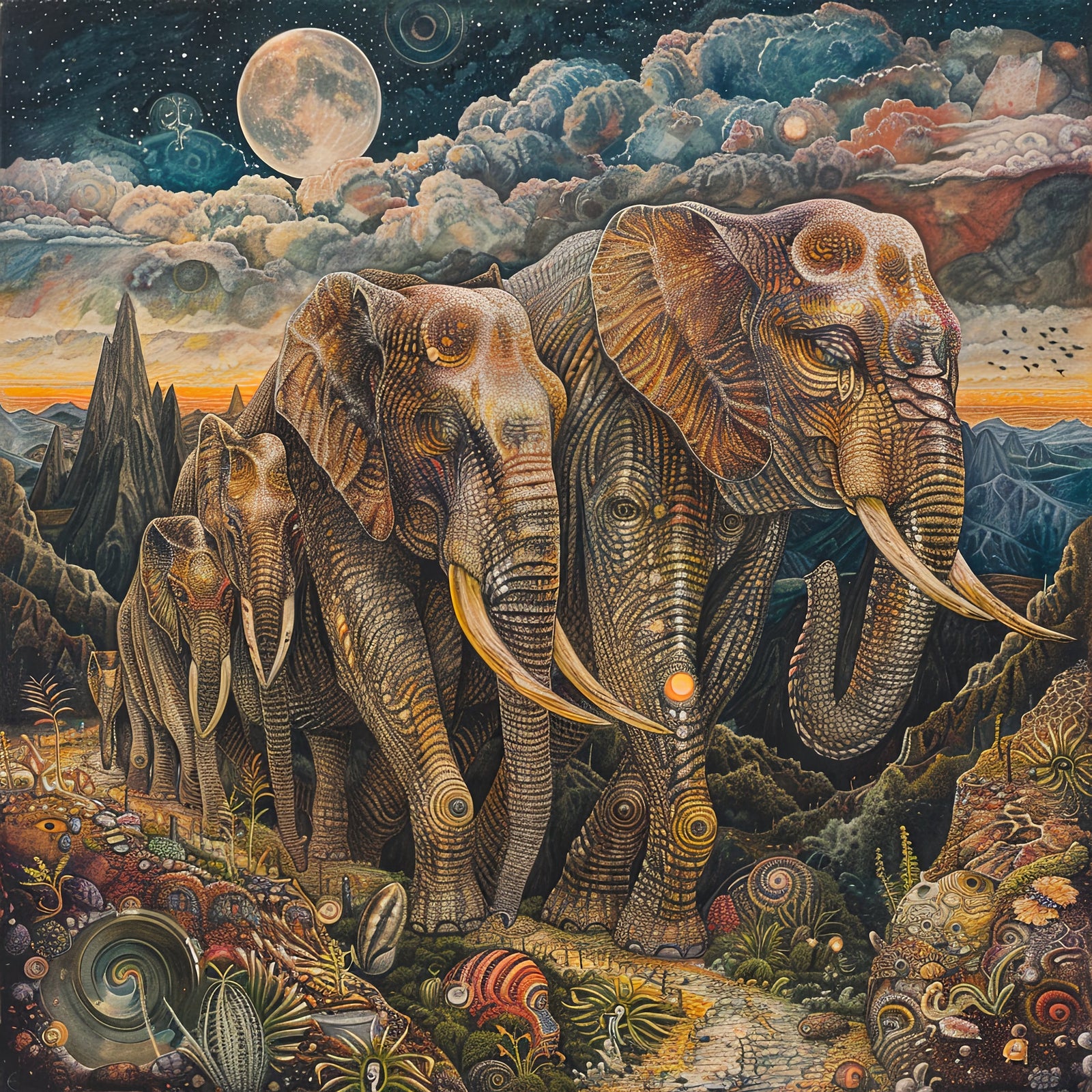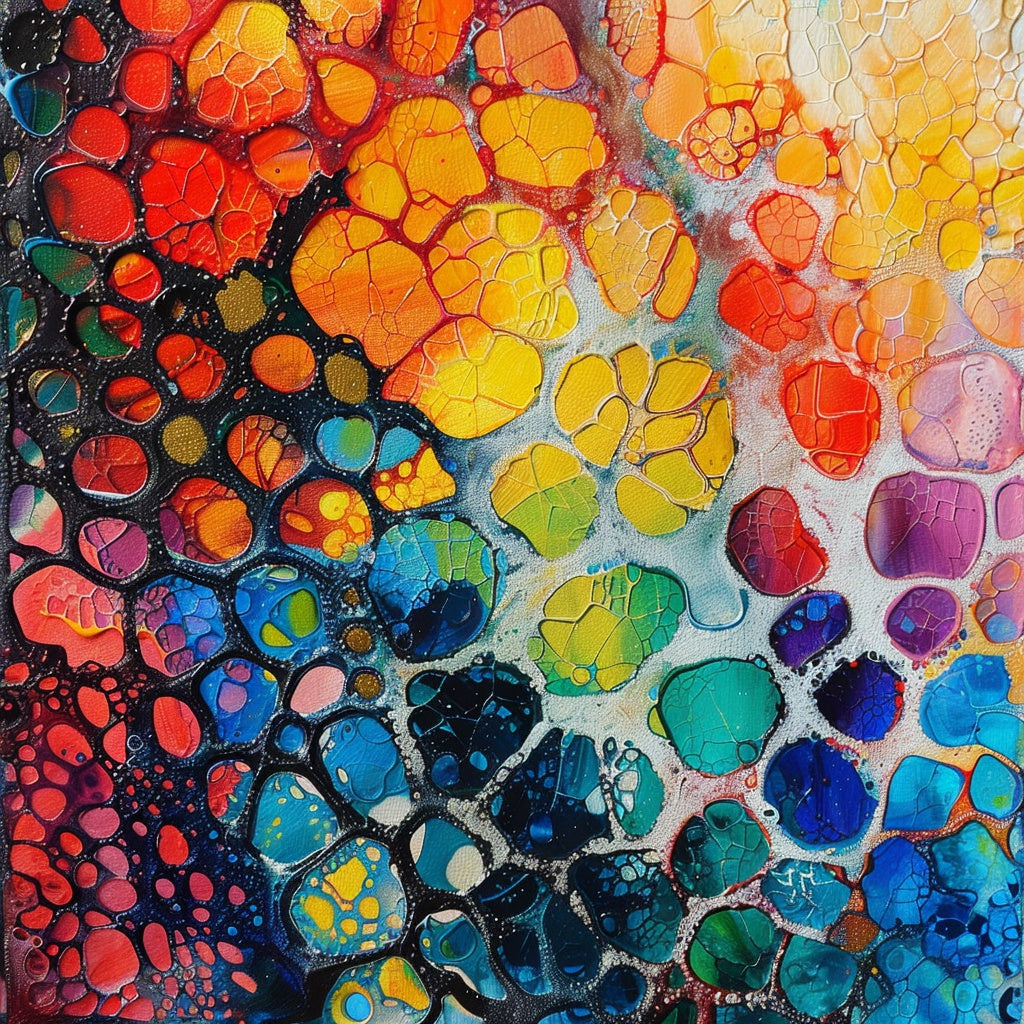AI Art: Artist Adaptation
The art world is experiencing a significant shift with the emergence of AI-generated art. This article explores how artists can adapt to this changing landscape and harness the power of AI to enhance their creativity and skills.
Table of Contents
- The Impact of AI on the Art World
- How Artists Can Adapt
- New and Emerging Art Forms
- Monetizing AI in Art
The Impact of AI on the Art World
AI-generated art is created using complex algorithms that learn from vast datasets of existing artworks. This technology has sparked debate about the nature of creativity, the role of the artist, and the future of art itself. The rise of AI in art has led to concerns about the potential devaluation of human artistic talent and the originality of artwork. Some worry that AI could lead to fewer job opportunities for artists. Artists must be transparent when using AI and avoid claiming complete ownership of AI-generated work, acknowledging the role of technology in the creative process.
Despite these concerns, AI also presents new opportunities for artists. It can streamline the creative process, automate tedious tasks, and explore new styles and techniques. AI can also help artists push the boundaries of traditional art and create new forms of artistic expression. For galleries, AI can be a valuable research tool, enabling them to analyze market developments, track the activities of influential figures, and understand collecting behaviors and patterns. This data-driven approach can help galleries make informed decisions about acquisitions, exhibitions, and artist representation.
One of the most significant impacts is the shift in public perception of art. A study found that 27% of Americans have seen at least one piece of AI-generated art, and 56% say they enjoy it. Furthermore, 31% of Americans believe AI can create just as good as human artwork. This shift in public opinion has significant implications for the art world, potentially influencing how art is created, valued, and consumed.
The impact of AI on the art world is similar to the impact of photography on painting in the 19th century. Initially, many painters feared that photography would make their art obsolete. However, photography ultimately led to new artistic movements, such as Impressionism, and expanded the possibilities of visual expression. Similarly, AI has the potential to revolutionize art and lead to new forms of creativity.
How Artists Can Adapt
Artists can adapt to the rise of AI-generated art in several ways.
Embrace AI as a Tool
AI can be a powerful tool for artists, much like photography, digital editing, or 3D printing. Artists can use AI to:
- Generate ideas and inspiration: AI art generators can create a wide range of images based on text prompts or existing artwork, providing artists with new ideas and inspiration. When starting with AI tools, choosing the right AI model and configuring its parameters to achieve desired results is essential. Different models have different strengths and weaknesses, and adjusting parameters like randomness, brightness, and contrast can significantly influence the output.
- Explore new styles and techniques: AI can be used to experiment with different artistic styles and techniques, helping artists expand their creative horizons.
- Automate tedious tasks: AI can automate repetitive tasks, such as colorizing images or removing backgrounds, freeing up artists to focus on more creative aspects of their work.
- Create personalized art: AI can be used to create personalized art experiences that are tailored to individual preferences. A more advanced technique involves training algorithms on an artist's own artwork. This allows the AI tool to learn the artist's style and generate artwork that aligns with their aesthetic preferences, resulting in truly personalized AI-generated art.
Develop New Skills
As AI becomes more prevalent in the art world, artists will need to develop new skills to stay competitive. These skills include:
- Prompt engineering: The ability to write effective prompts for AI art generators is crucial for generating high-quality images. Prompt engineering involves carefully crafting text prompts that guide the AI's creative process. This requires understanding how AI interprets language and using specific keywords and phrases to achieve desired results.
- AI art curation: Artists can curate and select the best AI-generated images, adding their own creative input and interpretation. This involves evaluating the AI's output, identifying the most promising pieces, and potentially modifying or combining them to create a cohesive artistic statement.
- Digital art skills: As AI art is often created digitally, artists will need to be proficient in digital art software and techniques. This includes familiarity with tools like Adobe Photoshop, Illustrator, and other digital art platforms.
Focus on Human Creativity
While AI can generate impressive artwork, it cannot replicate the emotional depth, personal experiences, and unique perspectives that human artists bring to their work. Furthermore, AI lacks the nuanced understanding of context and subjective interpretation that human artists possess. Artists can leverage this limitation by focusing on the aspects of creativity unique to human expression. This includes:
- Incorporating personal narratives and cultural contexts: AI cannot replicate the personal narratives and cultural contexts that inform human art. By drawing on their own experiences and cultural backgrounds, artists can create deeply personal and meaningful art.
- Emphasizing imperfections and organic elements: AI-generated art often strives for perfection, while human art embraces imperfections and organic elements. By incorporating these elements into their work, artists can create more authentic and human art.
- Developing a unique artistic style: Artists can develop a unique artistic style that sets them apart from AI-generated art. This involves experimenting with different techniques, exploring new mediums, and finding a visual language expressing their vision.
Collaborate with AI
Rather than viewing AI as a threat, artists can embrace it as a collaborator. This collaboration can lead to new forms of artistic expression and push the boundaries of traditional art. Artists can work with AI to:
- Generate initial ideas and concepts: AI can be used to generate initial ideas and concepts that artists can then develop and refine. This can be particularly helpful for overcoming creative blocks or exploring new directions in one's art.
- Create hybrid artworks: Artists can combine AI-generated elements with their own traditional art techniques to create hybrid artworks. This allows artists to blend the strengths of both human and artificial creativity, resulting in unique and innovative pieces.
- Explore new artistic possibilities: AI can help artists explore new artistic possibilities and create art that would not be possible with traditional methods alone. This can involve experimenting with new mediums, styles, and techniques, pushing the boundaries of what is considered art.
New and Emerging Art Forms
AI is not only changing the way artists create, but it is also leading to new and emerging art forms. These include:
- Generative art: This art form uses algorithms to create unique and dynamic pieces that evolve and change over time. Generative art often involves setting parameters and allowing the AI to generate visuals based on those parameters, resulting in unexpected and often surprising outcomes.
- Interactive art installations: AI is being used to create interactive art installations that respond to viewer movements or inputs. These installations can create immersive and personalized experiences for viewers, blurring the lines between art and technology.
- AI-powered 3D printing: AI is revolutionizing sculpture and three-dimensional art forms by enabling the creation of intricate and complex structures. This technology allows artists to create sculptures that would be impossible to produce by hand, pushing the boundaries of traditional sculpture.
- Eco-art: AI can be used to create art that raises awareness about environmental issues. This can involve using AI to visualize climate data, create interactive installations that explore environmental themes, or generate art from recycled materials.
- AI-generated portraits: One of the earliest and most well-known examples of AI art is the "Portrait of Edmond de Belamy," created by the Obvious collective in 2018. This portrait, generated by a GAN algorithm trained on thousands of classical portraits, was sold at Christie's auction for $432,500, marking a significant moment in the history of AI art.
- AI-generated imagery: Google's "DeepDream" project uses a neural network to generate psychedelic and surreal images from existing photos. This project highlights the potential of AI to transform and reimagine visual imagery in unexpected ways.
Monetizing AI in Art
AI is not only a creative tool but also a potential source of income for artists. Here are some ways artists can use AI to generate income:
- Personalized Artwork: Artists can create personalized artwork for clients, such as portraits, landscapes, and abstract pieces, using AI tools. They can offer customization options like size, framing, and material to cater to individual preferences.
- Art Consulting: Artists can use AI tools to help clients choose art pieces for their homes or offices.
- Stock Photo and Video Creation: Artists can use AI tools to create stock photos and videos that can be sold on stock photography websites. AI-generated content can be unique and offer an opportunity to create more inclusive and diverse imagery.
Conclusion
The rise of AI-generated art presents challenges and opportunities for artists. By embracing AI as a tool, developing new skills, and focusing on human creativity, artists can adapt to this changing landscape and continue to thrive in the age of AI. AI has the potential to revolutionize art and lead to new forms of artistic expression, but it is ultimately the human artist who will guide this revolution and shape the future of art.
Artists willing to adapt and embrace this new technology will be at the forefront of this creative revolution. This involves mastering the technical aspects of AI art generation and engaging in critical discussions about the ethical and societal implications of AI in art. By actively participating in this dialogue, artists can help ensure that AI is used responsibly and ethically in the art world, fostering a future where human creativity and artificial intelligence coexist and enrich one another.
Footnotes
What Is AI-Generated Art? | IxDF - The Interaction Design Foundation
AI Art Statistics 2024 - Artsmart.ai
Policy Reflections: AI-Generated Art Implications
The Impact of AI Art in the Art Community - ICanHelp
The Impact Of Artificial Intelligence On The Art World - Forbes
The Impact of AI on Art: A Comparison with the Invention of Photography - Medium
AI-Generated Art: How Can Visual Artists Navigate This New Frontier of Creativity?
These Artists Are Using AI as a Creative Partner. See How! - Worklife VC
How AI is Transforming the Creative Process for Artists - IABAC
The Synergy of AI and Art: Pioneering New Forms of Expression
How Artists Use AI Tools to Create: A Step-by-Step Guidebook - RevArt
Artificial Intelligence Artwork: Revolutionizing Creativity with AI | Starleaf Blog
Future Trends: AI and Visual Arts - PRO EDU
Embracing Creativity: How AI Can Enhance the Creative Process | NYU SPS
In Defense of AI Art — Craig Boehman
Human Creativity x Machine Learning: Which Artists Are Using AI and Why? - Design Dash
15 AI Artists Who Exemplify the Weird World of AI Art - Unlimited Graphic Design Service
AI, Art, and Creativity: Exploring the Artist's Perspective - Salzburg Global



Leave a comment (all fields required)